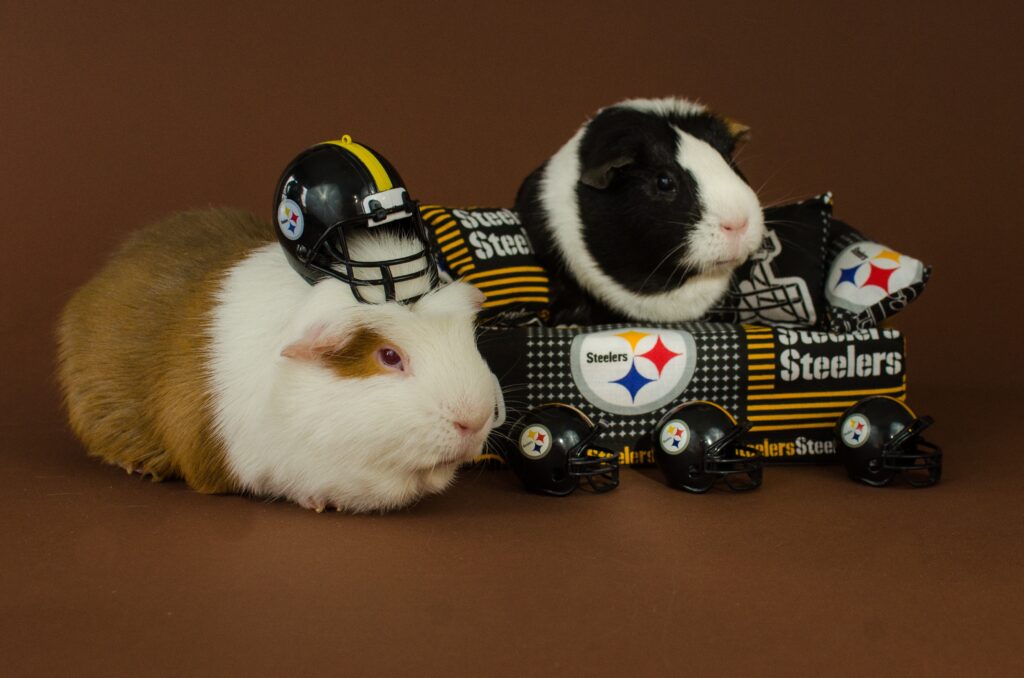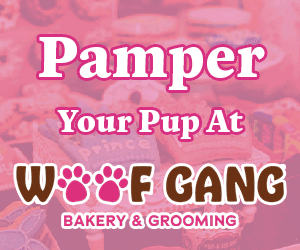By April Minech
Photo credits: Kim Lenz, Behind the Lenz Photography
Did you know there was a rescue for Guinea pigs? Why yes, there is, and it’s amazing. Wheek Care Guinea Pig Rescue is celebrating their 17th year of helping and supporting these little puffballs in November. Started by Julene Robinson, it recently became the first 501c3 guinea pig rescue in Pennsylvania. It has expanded over that time mostly through Julene’s big heart, and her motto “no pig left behind.” The rescue is located in New Kensington, where they offer services such as grooming, boarding, wellness checks, medical advice and hospice.
One important mission of the rescue is education, as small animals are sometimes considered starter pets. “We are really disheartened with that term”, says board president Lisa Toth. “Guinea pigs are living creatures – just like dogs and cats – with specific dietary and medical needs. They are sometimes purchased in haste, like a new toy for a child, who then gets bored. A guinea pig is a 5-8 year commitment.” To help children better understand care of guinea pigs, they provide a junior volunteer program that lets kids work hands on with care at the rescue. They are able to see what it takes to provide a good life for the piggies, and to learn responsibility. And the rescue offers foster opportunities as well. Participating in a hands-on way can let the child experience taking care of a pet, and help determine if a longer commitment is a good idea.
So what does a guinea pig need? Their diet consists of about 80% timothy hay, pellets and about 1 cup of raw vegetables, such as green leafy vegetables and peppers per day. They also enjoy fruits as treats. Most are comfortable living in a properly sized enclosure made from coroplast and storage cubes, or purchased at www.cavycages.com. Aquariums are not recommended, as they can cause blindness, and wire bottom cages hurt their feet. And they want to be held and loved and paid attention to. “They are pint-sized puffballs with big personalities” say Lisa. Some people make additional enclosed areas with collapsible grid systems or ex-pens, so the guineas can have an excursion or new exercise area to enjoy. When out of their regular safety enclosures, they should always be supervised, as they may find new things to chew on that aren’t safe. For bedding, you can purchase kiln dried pine; do not use cedar or other woodchips, as it can cause upper respiratory issues. The folks at Wheek Care can help advise you with any questions about housing or care. Coroplast and storage cubes, as well as fleece with layered with bath towels and puppy pee pads is also an excellent option.
Interesting tidbit: their teeth constantly grow and chewing hay acts as a natural filing system!
If you are interested in supporting WCGPR, they are always looking for volunteers. Like many other rescues, they need people to help with transport and fostering, and general help at fundraising events. Or you can help hands on with cleaning, feeding and loving on them in person at their facility. Or donate! Guinea pigs are small, so even a small donation goes a long way. Check out their web site www.WheekCare.org to download a volunteer form, donate, or learn more about this great organization!



